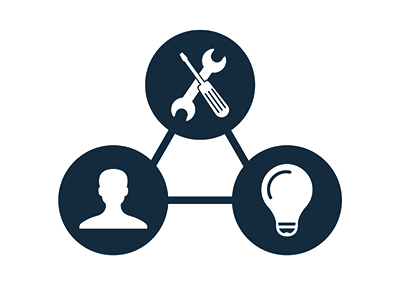The line between product and service continues to blur by the day.
That’s even true in the traditionally slow-changing world of manufacturing. The days of “all we do is make things,” is slowly changing into a mindset of capturing post-sale revenue through service offerings.
Servitization in manufacturing is all the rage now, and that’s because it helps build longer-term relationships between the manufacturer and its customers and end users – not to mention creating a source of revenue with tastier margins compared to product production.
In a nutshell, servitization is using data and digital tools to offer post-sale services to customers, including predictive maintenance, field service, product upgrades, reorders, cross-selling and upselling, etc. For manufacturers, this type of approach helps build the brand while also increasing the lifetime value of a customer and improving the customer experience.
The Steps Toward Servitization
There are some important questions to ask to know if servitization is the right direction for your manufacturing operation (click here to download this servitization questionnaire as a PDF):
- What are the post-sales service requirements?
- Do your customers have a need for a particular service when it comes to your product?
- How feasible is it that your customers would buy services directly from you?
- How would your business model change if you added new revenue streams with services?
- How digitally advanced is your company?
- How advanced are your marketing capabilities?
- Do your competitors have service offerings?
 Communication Is Key to Servitization
Communication Is Key to Servitization
A major part of good service is good communication.
That’s why good marketing can go a long way in maximizing leads and revenues through servitization.
In the old days of manufacturing, a company made a product for a customer, who buys it and then gets all their service through a third party.
Now, if a manufacturer has invested in an ERP system, as well as other tools like smart tracking, monitoring and data analytics, they have more opportunity to gain revenue through services.
Let’s say I’m a customer.
I buy a product manufactured by your company and the product has a general lifespan of six months. After four months, I receive an email checking to see how everything is going with my machine. A little later, I receive a notification that it might be time to start thinking about ordering another part – the six-month lifespan is almost up. Maybe there’s also a piece of content that speaks to tips and tricks for maintaining the equipment. When the time comes for me to replace the part, I’m more likely to go with you.
You want people to associate service and replacement parts with you – not a third party. It’s low-hanging fruit with wider margins and builds a healthier future for the relationship with customers if you are willing to make the investment into owning this new space.
And if you aren’t capitalizing on servitization, more than likely your competitors are.
If you’re interested in getting started on your servitization journey, click here to download the servitization questionnaire.
